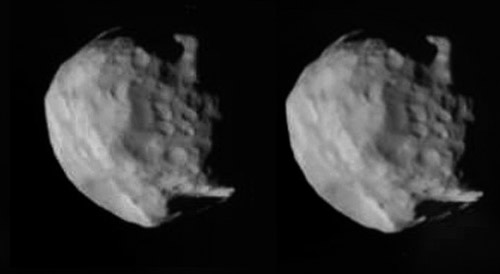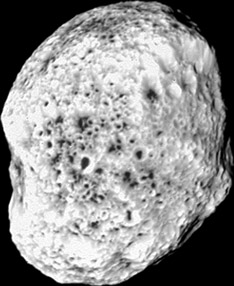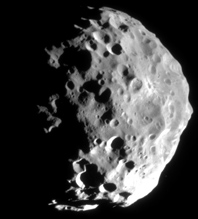Emily Lakdawalla • Jul 26, 2007
The best view of Helene yet
Cassini's current orbit has been a great one for the imaging of Saturn's icy satellites; there have been lots of images of Tethys, Dione, Enceladus, Hyperion, and a bunch of mutual events of various moons with each other and/or Saturn and its rings. However, the most unusual item is Cassini's closest approach yet to Helene. Helene is a very small moon, a lump approximately 36 by 32 by 30 kilometers in size. Unlike most of Saturn's smaller moons, this one isn't close to the rings; instead, it orbits among the much larger round satellites. This one sits in Dione's leading Lagrange point ("L4"), a position 60 degrees ahead of Dione in the same orbit where the gravity of Saturn and Dione balance each other. (There is also a trailing co-orbital named Polydeuces.)
Just to set up the context, here's the best image we had of Helene before Cassini arrived. I went in to the newly calibrated and geometrically corrected Voyager Saturn data set on Helene to get this one, not that it mattered very much; Helene is only a few pixels across, and not much is visible except that it's lumpy and has at least one really big crater.
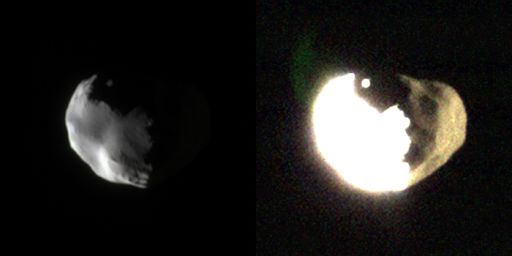
NASA / JPL / SSI / Color by Gordan Ugarkovic
Helene in day and night
These images of Dione's orbital companion Helene were taken by Cassini on February 25, 2006 from a distance of about 68,000 kilometers. The moonlet was lit at a high phase angle so only a crescent is lit by the Sun. Both views are made from the same set of images. The one on the left shows the sunlit crescent, while the one on the right shows details on the night side visible in yellowish Saturnshine.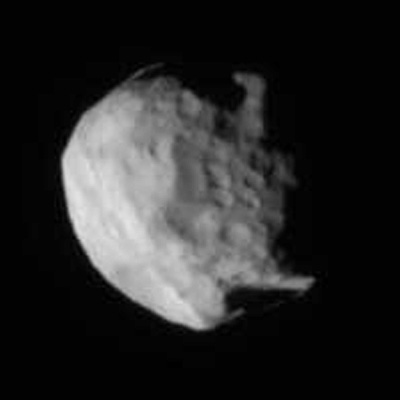
NASA / JPL / SSI
Helene
Cassini passed within 36,000 kilometers of Helene to take this image on July 20, 2007. Helene is the leading co-orbital companion to Dione and is a small, irregular body measuring approximately 36 by 32 by 30 kilometers in size. This image has been enlarged by a factor of two.For a better sense of the topography, here's a crossed-eye stereo pair. To see the 3-D view, stare at one and cross your eyes until the two images overlap in the middle of your vision, then try to focus your vision to get the crossed image to resolve into three dimensions.
| Pan | Atlas | Telesto | Helene |
|  Pandora | |||
| ||||
Support our core enterprises
Your support powers our mission to explore worlds, find life, and defend Earth. You make all the difference when you make a gift. Give today!
Donate

 Explore Worlds
Explore Worlds Find Life
Find Life Defend Earth
Defend Earth



